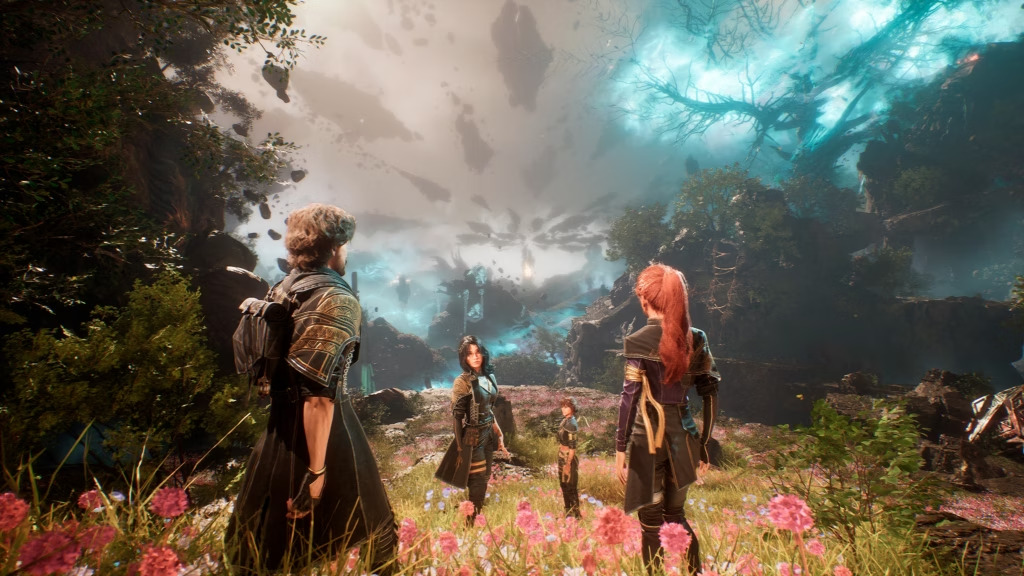After it was first revealed almost a year ago, few could truly comprehend all that Clair Obscur: Expedition 33 would set out to become. As Sandfall Interactive’s stunning debut, it’s certainly an ambitious undertaking that instantly pulls you into its rich, yet heartbreaking world with real ease. Grief breathes through the game, with you, the player, determined to see this expedition through no matter the cost. Alongside dynamic turn-based combat, players venture forth to the continent with one goal: kill The Paintress and fight for the future of Lumiere. Clair Obscur: Expedition 33 is a game unlike anything I’ve ever played before.
Set in a stunning alternate Paris-inspired Lumiere, Clair Obscur: Expedition 33 sees players setting out on an expedition to the continent in search of The Paintress. In the lead up to this 33rd expedition, we learn that this world is afflicted by the Gommage, which sees the population of Lumiere gradually erased. Each year, older members of the city fade away, leaving those below that age to pick up the pieces. It’s not hard as a player to feel for the plight of Lumiere, yet they rally and celebrate the last day while preparing for the next expedition. During the Gommage, the mysterious figure in the distance, The Paintress, awakens and paints the new number on the monolith. This causes the oldest residents of the city to fade into nothing. It’s stunning, yet brutal.
It’s here we meet Gustave and Maelle, preparing not only for the 33rd Expedition but also the Gommage, with Gustave having to farewell his past love, Sophie, who’s aged 33. It’s a brutal beginning to the game that ties our hearts with those of the latest expedition. There’s little time to waste before the expedition is away to the continent, to the landing zone of the first expedition. Everything is going according to plan, till it’s not.
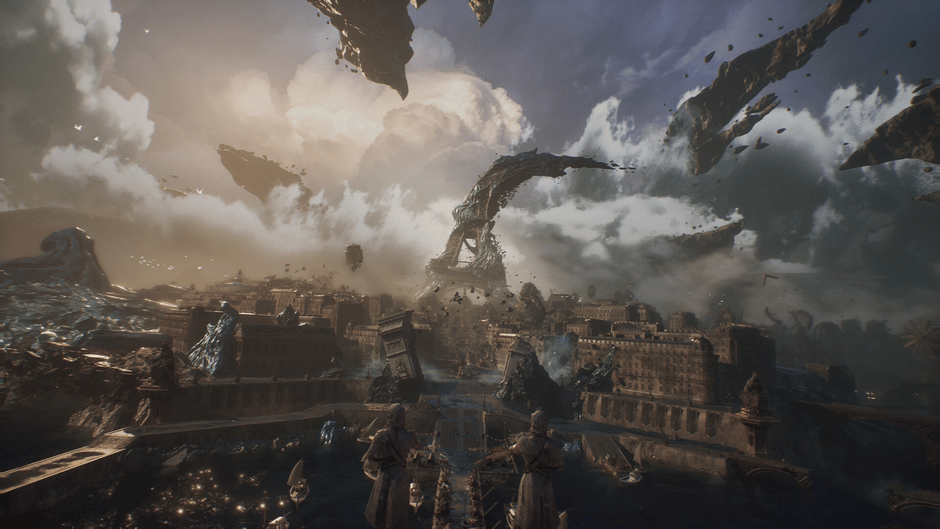
While I won’t reveal much more, I can at least say Clair Obscur: Expedition 33 is very careful in what it gives away early on. Despite the intrigue in the plot as players set out, it’s really how this game twists around itself that kept me guessing and appreciating the adventure I was on. It’s really impossible to know where this game will take you in that prologue past the broadest of brush strokes. Each Act feels determined to right the course of the game as the player learns more about this world and what’s really at stake.
It definitely doesn’t pull its emotional punches along the way either, from those first moments of loss to right through the game as characters grieve and forge ahead. It’s impossible not to feel everything as these characters go up against brutal odds. It’s hard not to choke up at the various sayings of the party too. “For those who come after” and “When one falls, we continue” both still echo through my heart for just how helpless the plight of 33 is. Yet they continue.
Exploring the continent is both awe-inspiring and confronting, to say the least. With The Paintress looming in the distance, exploring the ruins feels like a bitter reminder of just what’s on the line for Lumiere as well. Nevrons, aka enemies to the expedition, are in plenty, along with a host of NPCs, including Gestrals – puppet-like beings that exist on the continent, fighting and selling items. Other deeper mysteries linger on the continent, from mansion doors where they shouldn’t be, to faceless shades that linger in place. Having finished the main story, it urges me to keep playing and discovering more about this world.
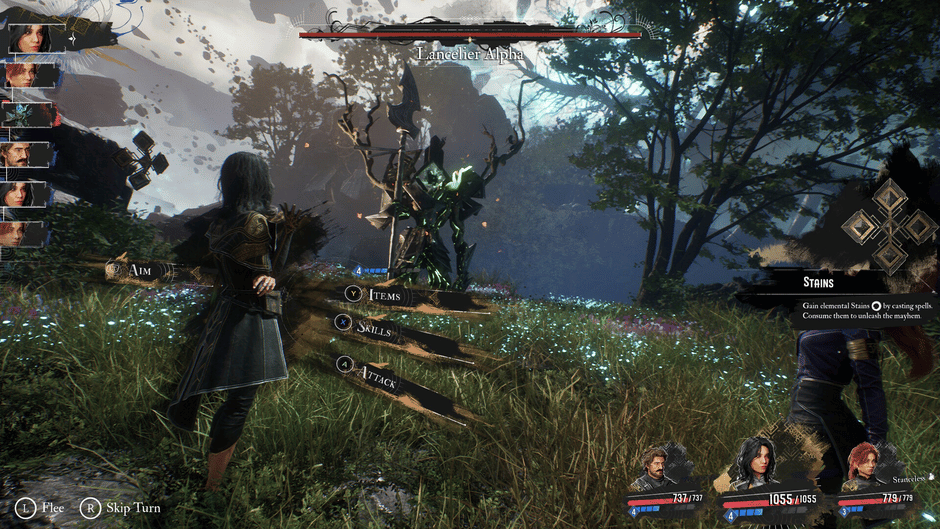
Even previous expeditions play a role in the journey of 33, from journal entries detailing their efforts to reach The Paintress to the preparations made for future parties should they not succeed. Their bodies become another reminder of just how heavy Lumiere’s losses have been. It’s a certain heaviness that held onto me as I was playing. Moving through piles of corpses, it’s impossible not to understand how much is at stake here. That effort to build out this world is much deeper than aesthetics.
After an opening section, the game expands into an overworld miniature-style map, allowing players to move quickly between areas and even encounter enemies while also appreciating the world of the continent. Later in the game, players also receive a gestral friend named Esquie who functions as a vehicle in the overworld sections, allowing players to move faster, enter new areas, and even navigate the world differently towards the end of the game. Areas within the map are reached through portal-like gates, allowing players to experience these levels more closely. This felt like a great balance of exploration and progression through the game.
Clair Obscur: Expedition 33 also features up to 6 playable characters: Gustave, Maelle, Lune, Sciel, Verso, and Monoco. Each has their own mechanic influenced by how you play the turn-based battles, leading to them being able to buff damage, defence, or even reward specific playstyles. I frankly love how unique they are – from Monoco’s cycling buff to Lune generating stains that add extra buffs and effects to attacks. It really allows you to build a team around your playstyle, allowing for character synergies and further kitting them out with weapons.
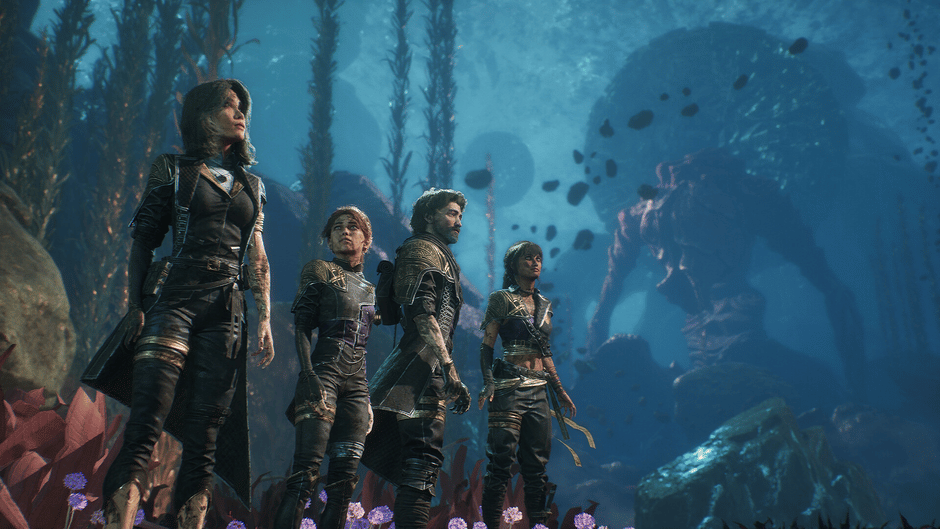
While the roster might feel small, it also lends itself to the story with how Expedition 33 plays out. Lumiere’s time is dwindling more so in that every year less and less people venture to the continent. The game makes this exceedingly obvious with the bodies of those previous expeditioners sometimes even heaped across locations on the continent.
The combat in Clair Obscur: Expedition 33 sees players going back and forth with enemies via turn-based combat. Quick-time events see players reacting to combat as it unfolds, both during attacks and on the enemy’s turns. Players are able to react by timing dodges, jumps and parries to defend against damage. I was really surprised by how much I enjoyed this style of turn-based combat since I’m more used to the traditional back-and-forth. Having that combat feel so reactive is incredible, with parries and dodging often being the difference between surviving an enemy’s turn. The opportunity to do parry damage as well is just as thrilling, even if you have to risk the timing. In ways, Clair Obscur: Expedition 33 has made me almost rethink my dislike of turn-based combat for its slowness. Being able to take your time and even fight back on enemy turns freaking rules, actually.
The free-aim is also an interesting addition, as it lets you target the enemy’s weak points. It made for quite the challenge, too! Enemies’ idle animations mean the free-aim shots need to be timed, especially if you’re looking to weaken the enemy drastically. Depending on your character’s build, this also allows you to buff attacks or add status effects to the enemy. I honestly would’ve liked to see free-aim utilised more across the game. Players are able to use it through levels to stagger and avoid enemies as well as access treasures.
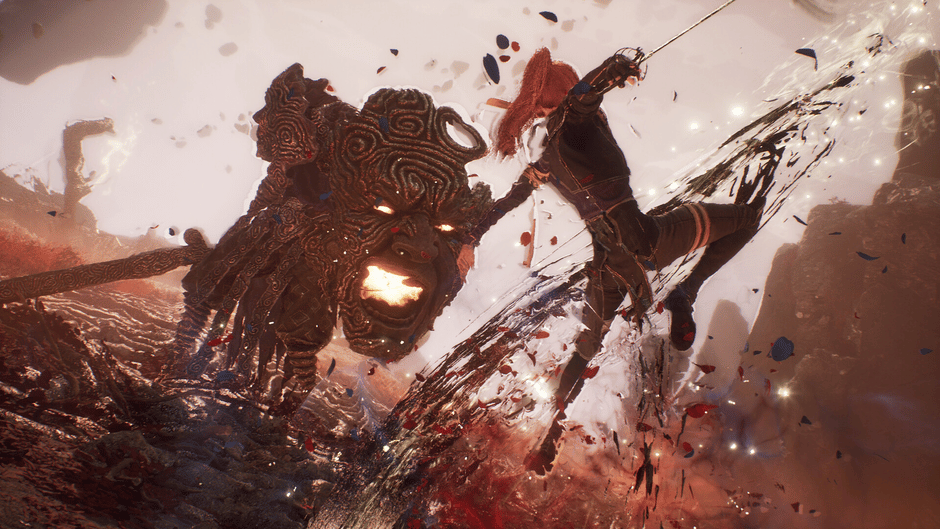
I also really liked how the game handles the special Pictos abilities that give passive abilities. Around the game, players find various Pictos, containing buffs and abilities that affect battles with the nevrons. Once players have had a Picto equipped for long enough, they learn it as a Lumina, which they can activate as passives even when the Picto is not equipped. I loved the Lumina system once I got my head around it. Being able to activate passives learned really helped build out my team. Everything from taking the first turn, to defending from a battle status effect such as charmed. In the harder battles, these are so necessary to strengthen your team.
You also can’t not give Expedition 33 enough flowers for its soundtrack. Across the entire game, it’s that last piece of the experience that fills out the emotional weight of this world. It encourages players to sit with the events of the game, carrying plot points of the game with care. Amongst it all, icons like Lumiere add motion to the plight while the Flying Waters suite feels more curious. It adds to the game’s awareness of its hopelessness, yet determination to see the journey out.
Where Clair Obscur: Expedition 33 does continue to surprise me, though, was the extra details in the world. Past the side quests, it was the Gestral Beach areas that provided a reprieve from the game in areas. From minigames playing volleyball to platforming across obstacles, time attack, and even an entire tower of objects in the vein of those Only Up rage games. The reward for beating these is a fun batch of beach-themed cosmetics for all the characters. For a game so heavy with grief, these lighter moments do feel necessary, even just to round out the characters with some lighter moments.

In-between areas and bigger plot beats, players can also retreat to the camp, a hub-like area. This allows the player to regroup, chat with the other characters, play music and buy upgrades. It’s here that many of the game’s quieter moments take place; we see the characters interact, and our love for them only grows. Players can even document the journey in Gustave’s journal, an interaction that recounts some recent game events.
As it stands, Clair Obscur: Expedition 33 is an impressive RPG experience worthy of every applause. From the soundtrack all the way to the turn-based combat, it’s a masterful journey that tugs at your heart. Despite being so transfixed on grief, the character building and narrative centres itself on the hope of what comes next. Few games have grabbed me like the plight of Expedition 33, and it only furthers the deeper into the experience you find yourself. It’s rare to see a game so epic, yet tender with its cast of characters. Sandfall Interactive have certainly proven themselves with this stunning debut.
CLAIR OBSCUR: EXPEDITION 33 REVIEW
Clair Obscur: Expedition 33 has absolutely blown me away in every possible way. The game positions itself masterfully, exploring grief through the eyes of its characters as they hope for the future in spite of the journey ahead. Exploring Lumiere and the continent is a thrill, with enemies aplenty and battles that feel equally challenging and satisfying. It’s a stunning RPG that pulls at your emotions with its clever portrayal of hope. If you’re avoiding this one because of the turn-based gameplay, then I suggest you pipe down and let this game become your new obsession because it’s unforgettable. Do it for those who come after!
PROS
-
Story is incredibly deep and full of lore
-
Art direction is stunning
-
Turn-based combat is oh-so-satisfying
-
Character roster featuring unique playstyles
-
Gorgeous soundtrack
-
Light-hearted side-content is rewarding
CONS
-
It made me cry A LOT
Reviewed on PC. A review code was provided by the Publisher for purposes of this review.
